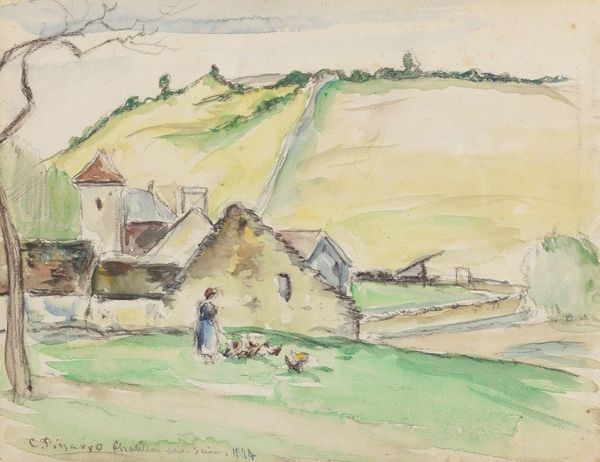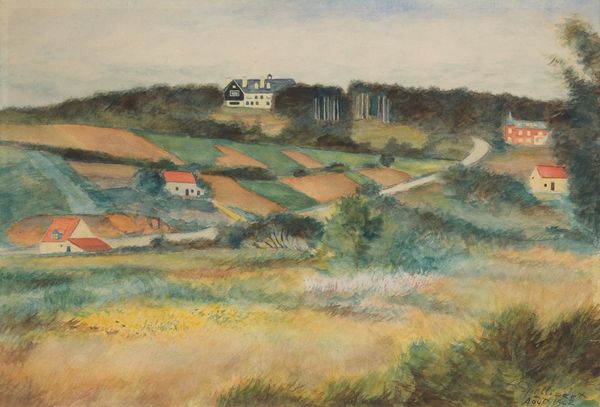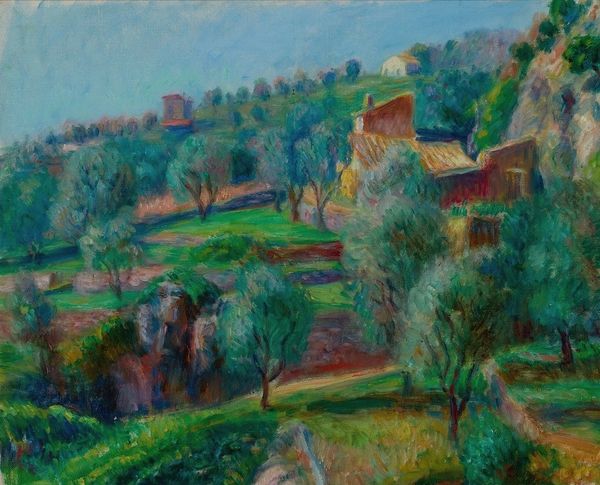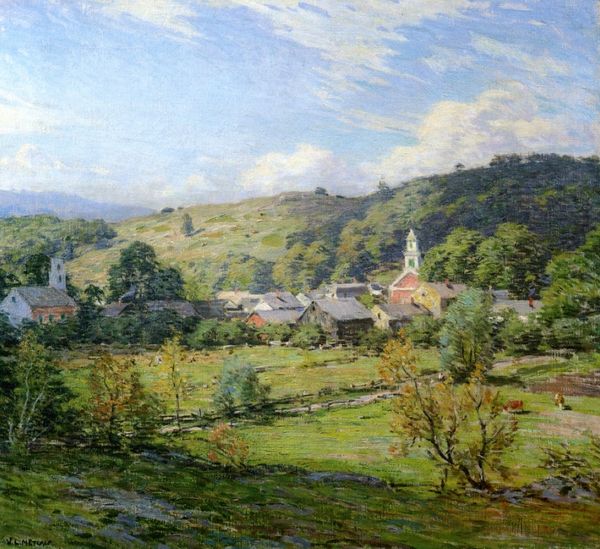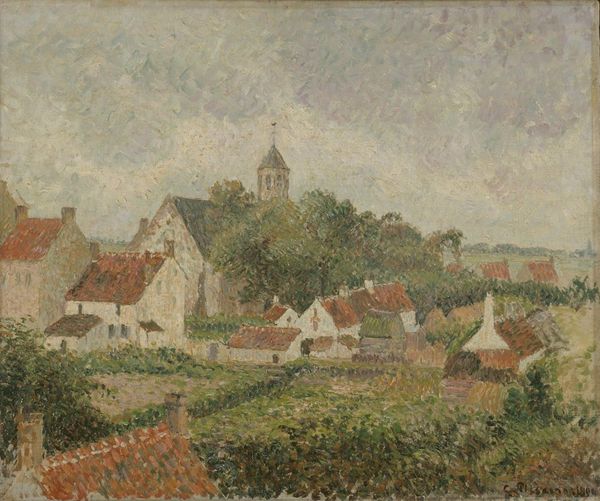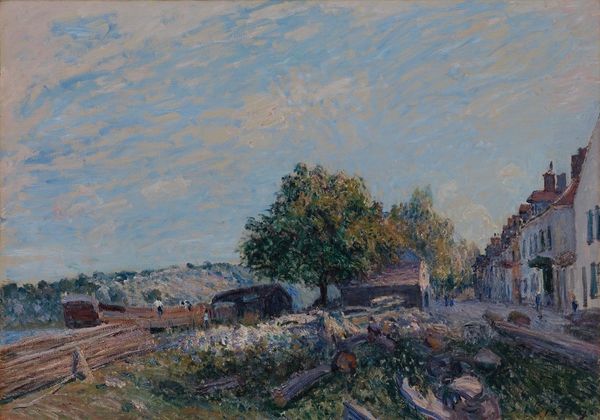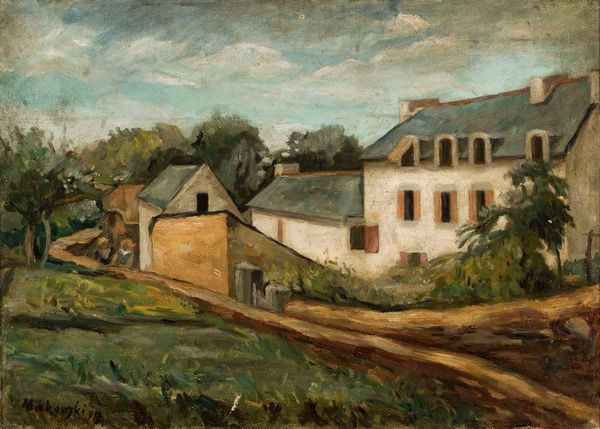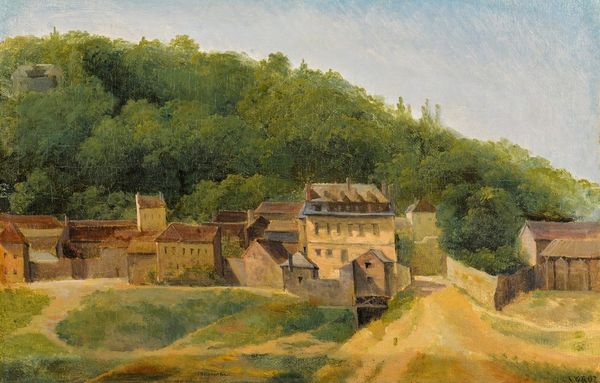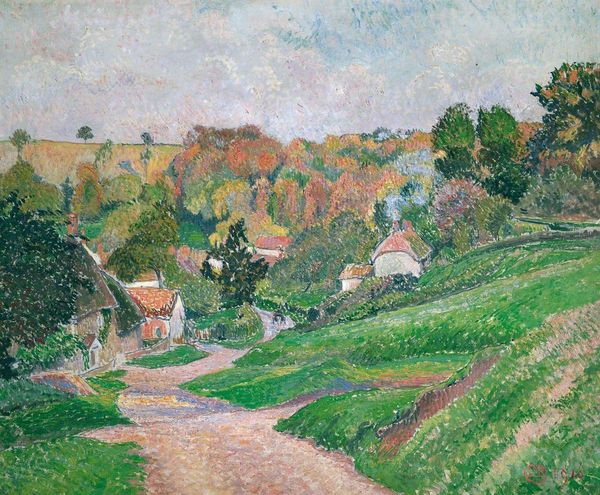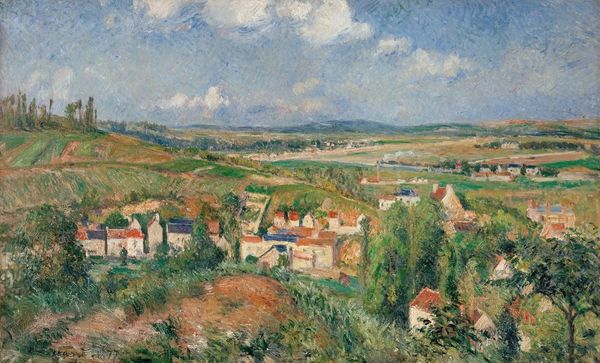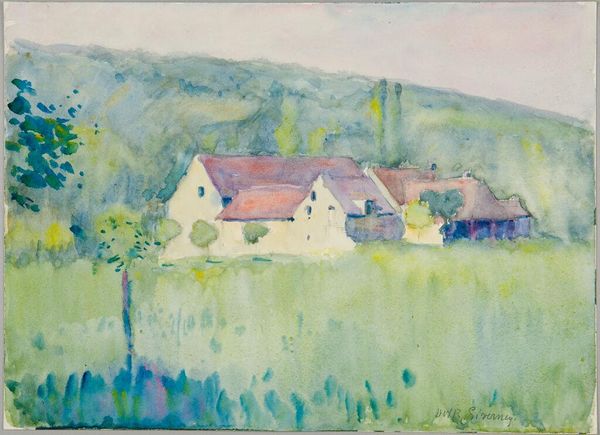
painting, plein-air, oil-paint, impasto
#
painting
#
impressionism
#
plein-air
#
oil-paint
#
landscape
#
impressionist landscape
#
oil painting
#
impasto
#
seascape
#
genre-painting
Copyright: Public Domain: Artvee
Curator: My eyes feel sun-drenched just looking at it. Is it me, or does this feel like a perfectly captured fleeting moment? Editor: That's the magic of Impressionism! This is "Le Châlet De Blanche Pierson à Pourville," painted in 1882 by Pierre-Auguste Renoir. You can practically smell the sea air coming off this oil painting. Curator: Definitely get the sea air. I love the feeling of gentle disorder – that the landscape just sort of happened, with the little village nestled in. It almost vibrates with light and spontaneity. Like he just tossed it all together. What exactly is a "châlet?" Editor: A châlet is like a Swiss cottage or a summer house, right? Pierson, an actress, owned that house in Pourville, France, and the painting does a great job in showing a bourgeois community taking retreat from the city during summer, relaxing away from urban centers, amid fresh and untouched nature. The way the houses huddle together, it’s a little bit of society in retreat. Curator: Exactly. The details, especially those little figures on horseback down below, it's all so soft and playful, but even with such vivid color and lively brushstrokes, it has something about it... Almost wistful, don't you think? The colours are somehow making me sleepy... Editor: That wistfulness you are experiencing probably ties into a shift in Renoir's style at the time. "Le Châlet De Blanche Pierson à Pourville" comes at a time when Renoir, like other impressionists, grappled with the changing landscape of art— how much to embrace the fleeting moment versus something more permanent. It is an exercise in light, but also a deeper quest to capture a modern experience. Curator: Modern indeed, this landscape also makes me think that it is actually timeless. Editor: I’d agree. It invites a slower, more thoughtful viewing. It's a scene that reminds you that there's a long cultural history of art's relation to place.
Comments
No comments
Be the first to comment and join the conversation on the ultimate creative platform.

